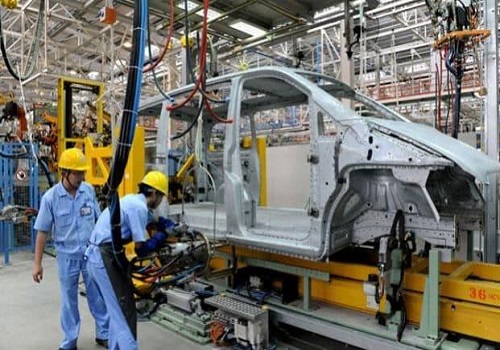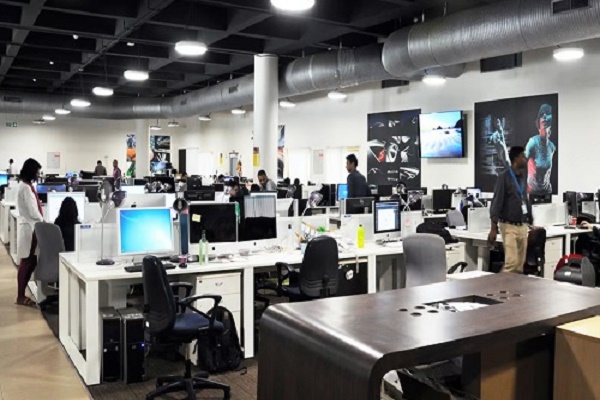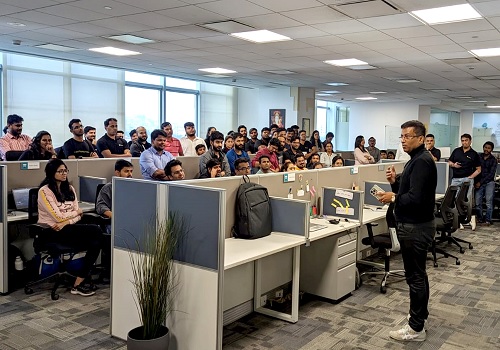Technology Sector Update : IT Services - Holding ground; awaiting revival By Motilal Oswal Financial Services Ltd
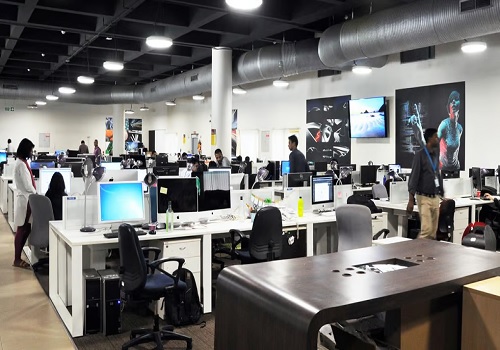
IT Services: Holding ground; awaiting revival
* The 2QFY26 earnings for IT services offered some respite on already beaten-down expectations. Half of the companies under our coverage exceeded revenue estimates (only 8% missed), while 75% met or beat our margin estimates (of the 12 companies that have reported so far). That said, questions around structural demand drivers remained unanswered.
* We did, however, see first steps toward an AI strategy being formed in pockets. Most notable was TCS, which announced a USD1b investment toward colocation data center (although we are yet to see any AI or IT services adjacencies in this); HCLTech began reporting AI-driven revenue contribution, whereas LTIM doubled down on its AI-foreverything strategy. These initiatives, however, remain more directional than revenueaccretive for now.
* We have argued before in our report dated 19th Sep’25 (GenAI and IT Services: The waiting game) that reducing IT services to an “AI laggard” basket is reductive. As with past technology cycles, platforms and services are built once hardware augmentation reaches diminishing marginal returns. Also, a new “consumer” technology takes 5-8 years to become enterprise-grade. For GenAI, we expect to be 18-20 months away (refer to Exhibit 9). Until then, we continue to prefer bottom-up plays with deal and earnings visibility in IT: HCLT and TECHM in large-caps and COFORGE in mid-tier. Our observations regarding the quarter are detailed below.
Revenue beat the already low expectations, but questions about the turnaround remain unanswered
* The 2QFY26 earnings offered some respite, as expectations were already beaten down and the quarter was seasonally strong. Largely all large-cap companies managed to beat/meet revenue estimates, helped by steady deal ramp-ups. However, management commentary indicated that demand remains subdued, with no clear signs of a new spending cycle emerging.
* Seasonal tailwinds aside (such as HCLTech’s P&P business in 3Q), the outlook for most companies is meek in 2H, as furloughs, productivity gains, and subdued discretionary spending could weigh on sequential momentum.
* Among Tier-1 firms, HCLTech stood out, raising its services revenue guidance on the back of strong deal wins, positioning it as the fastest-growing among the top four. LTIMindtree delivered a strong beat on both revenue and margins, prompting a 4–5% upgrade in our FY26/FY27 estimates. Tech Mahindra continued to guide for margin expansion and remains on track to deliver sustained earnings growth over the next few quarters.
* On the other hand, Infosys maintained the top end of its full-year guidance, indicating that growth recovery will be gradual, while TCS’s commentary suggests a measured demand environment into 2H.
* Among mid-tiers, Persistent posted 4.4% QoQ CC growth in 2Q (above consensus). With a CQGR of ~4.5% over the next two quarters, PSYS should comfortably deliver ~17.5% YoY CC growth in FY26E. While this is a slight moderation from FY25 levels, it remains healthy in the current demand environment.
* Coforge continued to outperform (~6% QoQ CC), and we expect it to remain the growth leader within our coverage. While MPHL’s deal TCV was healthy, revenue conversion remains to be seen. We expect the Tier-2 pack to outpace Tier-1 peers.
When does demand come back? Our answer: when hardware settles down
* As we depict in Exhibit 9, service adoption has always lagged the product frontier. Today’s services weakness mirrors earlier cycles (dotcom to app services, iPhone to enterprise cloud-native apps, consumer cloud to PaaS/SaaS), where enterprises only ramped up spending once the cutting edge of hardware stabilized.
* Where we are now: as shown in Exhibits 7 and 8, both LLMs and chips have continued to be augmented at exponential rates.
* We believe services demand could rebound as AI models and hardware advances begin to flatten. GPT-5’s modest gains over GPT-4.1 are an encouraging sign. When this stabilization sets in, enterprises will gain confidence to build durable tech stacks on top of the new AI layer, just as they did in past cycles.
Is GenAI enterprise-grade? Not yet, but it could be in two years
* Although enterprises remain eager to adopt AI, most solutions are not yet enterprise-ready or reliable. As shown in Exhibit 9, there is generally a lag of 5-8 years before a new consumer technology becomes enterprise-ready. GenAI arrived in Nov’22, we believe enterprise adoption is another ~18 months away.
Currency a major contributor to margin gains in the quarter
* Margins broadly met or beat expectations this quarter, largely aided by favorable currency movement, pyramid rationalization, SG&A efficiencies, and utilization gains. INR depreciation against the USD provided a sharp translation benefit across the board (refer to Exhibit 4). Of the 12 companies reported so far, ten reported a QoQ improvement in EBIT margins.
* However, 2HFY26 may see renewed pressure as wage hikes kick in, and furloughs and large-deal ramp-ups play out. Pricing pressures in a muted demand environment and ongoing deflationary trends could further weigh on profitability. In addition, the GenAI curve remains margin-dilutive in the near term as investments are ramping up, but monetization is yet to follow.
* If USD/INR stabilizes near current levels, incremental margin expansion could prove difficult. We expect margins to remain largely flat over the next 18–24 months across the industry.
Margins a key risk over the next 2-3 years, as seen from earlier cycles
* Between FY15 and FY19, large-cap IT vendors saw a steady increase in fixedprice contracts – Infosys’s mix rose from 41% to 53%, HCLT from 44% to 49%, and Wipro from 49% to 59%. This coincided with decelerating revenue growth, while most other external factors (currency, macro, etc.) remained broadly stable. Importantly, sector EBIT margins dipped ~150bp over these four years, suggesting that the pivot to fixed-price models carried a clear margin drag.
* As seen in Exhibit 11, the industry was hiring in line with revenue growth, and employee productivity basically flatlined in these years.
* If the industry is to avoid this fate again, hiring has to be somewhat decoupled from revenue growth; this should increase revenue per employee and defend margins.
Outlook: Absence of near-term catalyst may cap re-rating
* While 2QFY26 results were better than feared, the broader structural questions persist: when will discretionary tech budgets recover, and can GenAI spending move beyond pilot stages into scaled implementations?
* We remain underweight on the sector, as near-term earnings upside appears limited. The top 4 IT services names are trading at their average 10-year P/E and a 13% discount to their average five-year P/E. There is room to expand if earnings and outlook spring a surprise. We believe sustained rerating will likely require evidence of GenAI-led spends translating into meaningful revenue momentum, which, as of now, remains some distance away.
* We continue to prioritize a bottom-up play in IT: TECHM and HCLT in largecaps and COFORGE in mid-tier.
For More Research Reports : Click Here
For More Motilal Oswal Securities Ltd Disclaimer
http://www.motilaloswal.com/MOSLdisclaimer/disclaimer.html
SEBI Registration number is INH000000412
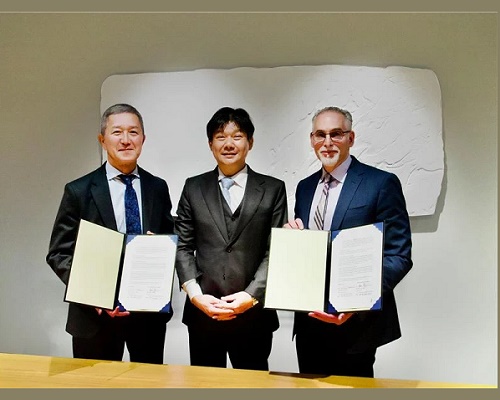









More News

Indian General Insurance Sector Update : GST 2.0: New wheels to drive motor insurance growth...


